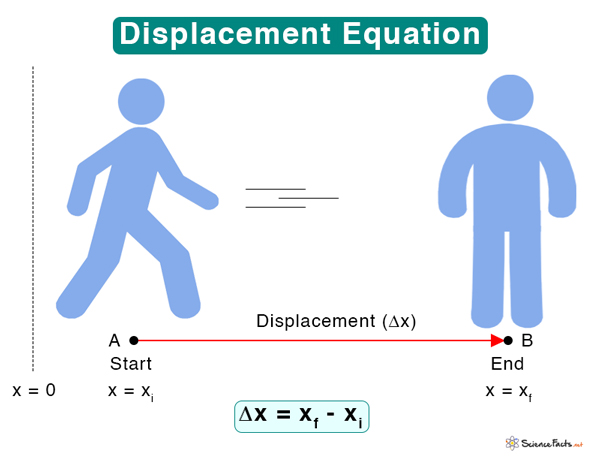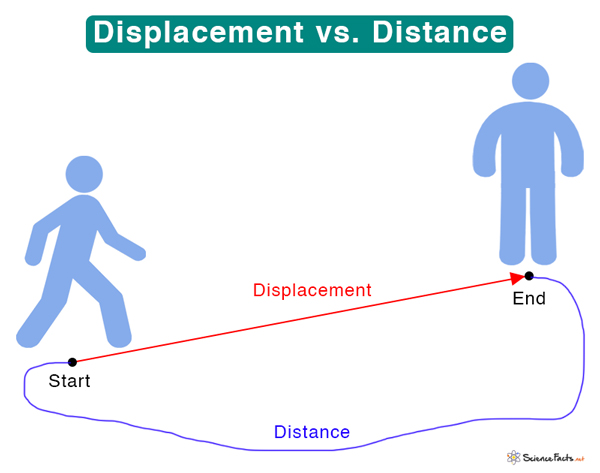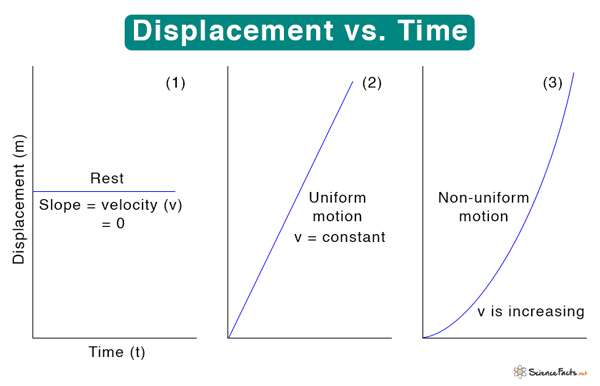Examples
How to Calculate Displacement
Displacement and Distance
Displacement Graphs
Consider a one-dimensional coordinate system. The variable x is often used to indicate position. Suppose a person is at position A, at a distance xi from the origin. Here, the subscript i refers to the initial position. After some time, he moves to position B at a distance xf from the origin, where f refers to the final position. Then, the displacement (Δx) of the person is Δx = xf – xi SI Unit: Meter or m Can Displacement be Negative From the above equation, it is clear that if xf > xi, Δx > 0. In other words, the displacement is positive. However, if xf < xi, Δx < 0, the displacement is negative. Therefore, the displacement can be negative depending upon the person’s initial and final positions, which in turn, depends on the direction in which he moves. In this case, he moves right in the positive x-direction. So, his displacement is positive. Had he moved left in the negative x-direction, the displacement would have been negative. Magnitude and Direction The magnitude of displacement is given by |Δx| = |xf – xi| The red arrow in the above images indicates the direction of displacement. Suppose a person walks from point A to B, not in a straight line but through a curved path. The blue curve illustrates his movement in the image below. In other words, the person has changed his direction multiple times while traversing from A to B. The blue path indicates the distance he covered, and the straight red arrow indicates his displacement. The following table highlights the difference between the two. Plot (1) shows that the object remains stationary for a while. In other words, the displacement is constant, and the slope is zero. The velocity of the object is zero. Plot (2) shows that the displacement varies linearly with time. The slope of the graph, and hence the velocity, remains constant and positive. Plot (3) shows that the displacement increases nonuniformly with time. It means that the slope and velocity increase with time. Since the velocity is increasing, the object is displaying acceleration.


